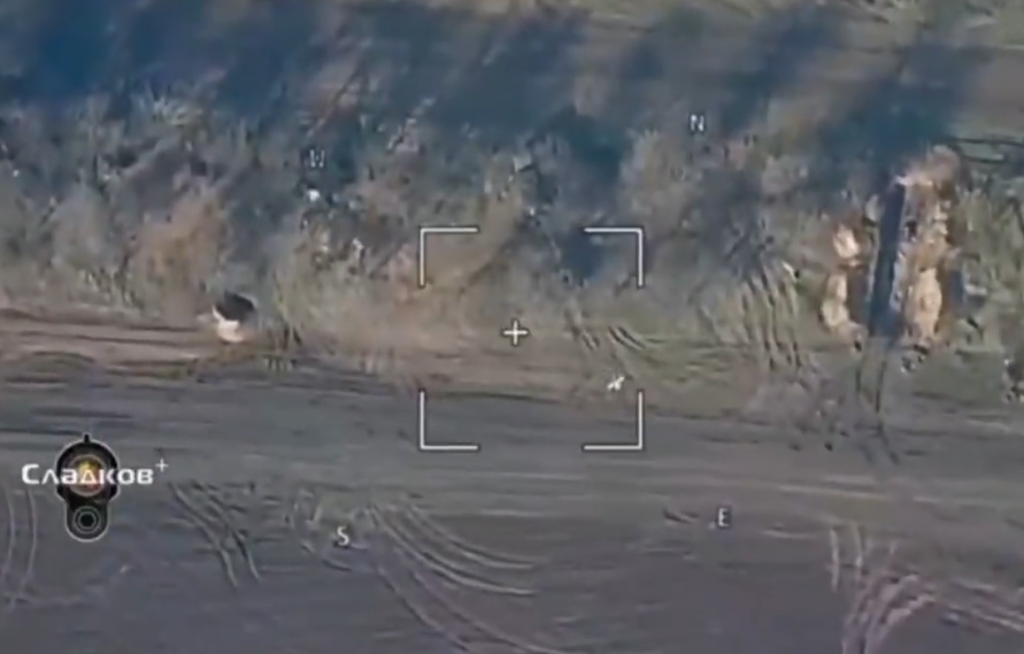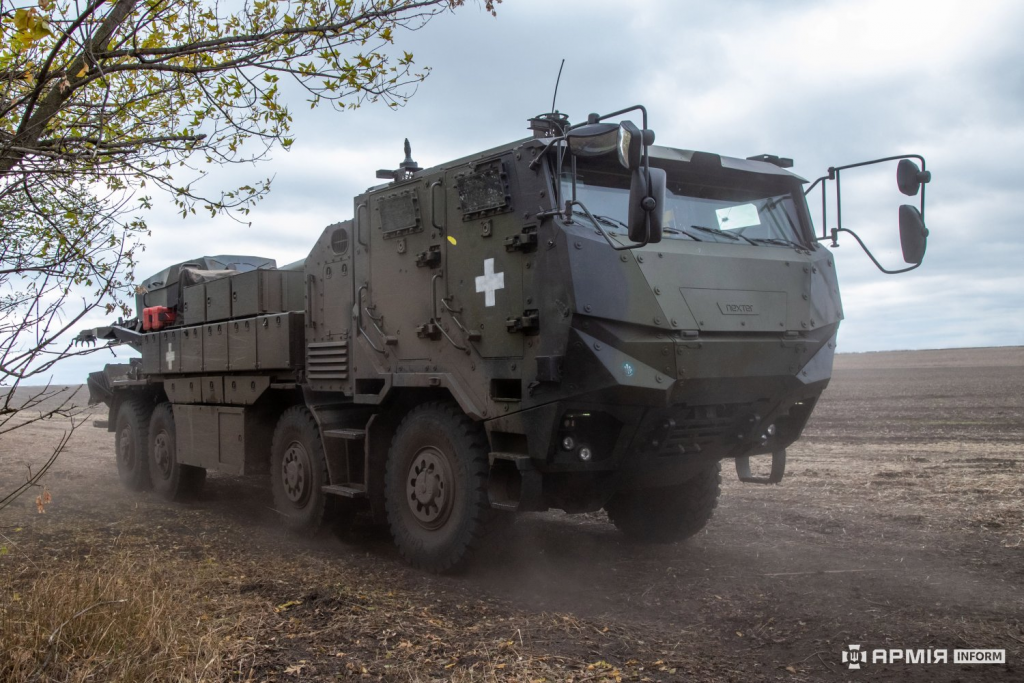Twenty-First Century Artillery: What Can We Learn From the War in Ukraine?
The war in Ukraine, as the first high-intensity near-symmetrical conflict of the 21st century, has offered some critical lessons on modern warfare and the use of artillery systems, whose role is constantly evolving in a technologically advanced battlefield, where traditional firepower is enhanced by tools like drones and precision-guided systems. The conflict underscores the importance of integrating new technologies with conventional forces, while also emphasizing the logistical challenges, the need for mobility, and the vulnerabilities posed by modern surveillance and countermeasures.
The return of large-scale attrition, prolonged high-intensity engagements, and staggering casualties, numbering in the hundreds of thousands, represents a stark reality not faced by the world’s most feWorld War II or, at the latest, the Korean War. Western militaries, accustomed to peacekeeping, peace-enforcing missions, or even coercive operations in asymmetric environments—such as Iraq in 2003, where the balance of power quickly shifted—are now rediscovering lessons that were once evident in theoretical training for a major conflict with the Warsaw Pact in the 1950s through the late 1980s.

The integration of mines, obstacles, terrain fortifications, and layered defense systems proves capable of halting even the best-prepared offensives, particularly when fire superiority, whether from air or ground forces, is controlled by the defending side. Ukraine’s unsuccessful counteroffensive in the summer and autumn of 2023 is a clear example of these dynamics in action.
A technological quagmire
Western armies had relegated many of these concepts to the archives of war colleges, but the war in Ukraine has swiftly revived them, enhanced by the unique technological advancements of today. The conflict has revealed new “game-changing” elements at the tactical level: the pervasive use of drones, the critical role of offensive and defensive electronic warfare, and the “scout and kill” capabilities that drones offer. The decentralization of these assets to the lowest echelons has made the battlefield almost transparent, vulnerable to any sensor-effector combination—especially in the flat, open terrain of the Donbas.

In this environment, defensive capabilities remain highly effective, while offensive actions have become prohibitively expensive, shifting the emphasis from traditional combined arms operations (infantry, tanks, and assault engineers) to the overwhelming use of firepower to secure enemy positions. Due to the high cost and limited availability of air assets, artillery has taken on the primary burden of delivering firepower. Success increasingly depends on precision strikes, but guided ammunitions are significantly more expensive, sometimes up to 100 times the cost of standard shells. Often, the outcome hinges on mass: the sheer number of artillery systems and the ammunition stockpiles, which must be constantly replenished due to the intense rates of consumption and attrition seen in prolonged conflicts. There is also a psychological element at work here. Ukraine’s former deputy defense minister, Volodymyr Havrylov, highlights the critical importance of artillery for Ukrainian forces in the war: “It’s very important for our infantry to hear the sound of our artillery every hour just to understand that they are not alone in the field.” This sentiment underlines the psychological and tactical significance of artillery in Ukraine’s defense and offensive efforts.

The evolving use of artillery
The industrial-scale losses sustained by both sides, particularly in terms of armor and artillery, make it clear that the issue of quantity can no longer be ignored. While most Western armies—arguably all except the United States—have, over the last 20 to 30 years, adopted a strategy focused on smaller, high-tech forces due to the costs associated with advanced systems, this approach is proving insufficient in large-scale, prolonged conflicts. This trend towards “one-shot” sample armies, characterized by high-tech but low-quantity arsenals, is now being tested. The depletion of artillery, as well as other military assets, highlights the urgent need for a reassessment of force structure, where both quantity and quality must be balanced to meet the demands of sustained combat in order to be able to endure a protracted conflict given the loss rate. While sophisticated systems offer tactical advantages, they must be reliable and available in sufficient numbers to sustain long-term engagements. This strategic recalibration is essential, especially in light of lessons from Ukraine, where high-tech systems like the Pzh2000 have struggled due to their complexity, fragility, and challenging maintenance needs in difficult environments, as highlighted by the Ukrainian Armed Forces.

The focus now must shift away from the procurement models of 1990-2020, which were largely shaped by expeditionary operations where losses were minimal and did not threaten overall military superiority. The current environment requires a frank dialogue between defense industries and procurement agencies to prioritize practical, durable solutions over hyper-sophisticated systems that may not perform well in drawn-out, high-intensity conflicts.
Ukraine’s experience with the Pzh2000 exemplifies these concerns. While advanced, it has proven to be ill-suited for the demands of long-term, attritional warfare, with reports of frequent breakdowns and logistical challenges, especially in harsh winter conditions. This highlights the broader need to reassess the role of sophisticated, high-maintenance weapons systems in favor of more sustainable and adaptable platforms.
Acquisitions
In this context, systems like the Archer or the Boxer RCH155 are highly appealing to potential customers, such as the British Army’s artillery program or the Canadian Army with its IFM initiative, despite the confidential costs associated with the latter. Similarly, tracked heavy howitzers like the previously mentioned Pzh2000 or the Korean K9A2 are often favored. However, while quick assumptions may equate high-intensity conflict with the need for tracks and heavy armor, battlefield realities—have exposed the limitations of this approach. A recent example is the Polish Krab howitzer, an indigenous version of the K9, which suffered due to Russia’s increased use of loitering ammunition. Indeed, the reality on the battlefield has highlighted the limitations of relying mainly on such systems. As Ukraine and other conflicts have demonstrated, firepower requires a balance of military qualities and cost-efficiency.
The reality of high attrition rates, including the loss of artillery pieces positioned well behind the line of contact, coupled with the extended duration of operational deployments under harsh conditions, underscores the need for not only high-performing, but also more robust systems. Additionally, they must be available in large quantities to swiftly replace those rendered inoperable during combat.

Ukrainian forces appear to have found considerable success with truck-mounted artillery systems such as the Zuzana 2, Dana, and Caesar. These systems have been particularly valued for their tactical mobility, which supports “shoot-and-scoot” tactics, and their operational flexibility. Their relatively light unit weight allows them to navigate degraded infrastructure, like damaged road bridges, making it easier to redeploy quickly across different sections of the front. The simplicity of their design, especially the truck chassis, reduces the logistical and maintenance burden, making them relatively easy to service and refurbish in the field. Moreover, these comparative advantages do not prevent the 52-calibre guns mounted on these chassis from being at least as effective as those of their more armoured and tracked competitors. Notably, Russian testimonials have highlighted the effectiveness such systems, from the target point of view, underscoring the growing reputation of these mobile artillery units on the battlefield.
Another critical factor in high-intensity, enduring conflict, where sheer numbers have once again become a key to success, is the substantially lower operational and maintenance costs of truck-mounted artillery systems compared to automated armored turrets whether on tracked or wheeled chassis. The acquisition costs for these systems are also notably lower than those of heavier tracked platforms, with cost ratio as high as 1 to 5, as analysed by Ukrainian experts. This cost-effectiveness makes truck-mounted systems an attractive option for sustaining large-scale, prolonged combat operations. This means, for the same budget, an army could equip itself with five times as many guns. Alternatively, the same number of guns could remain operational five times longer, allowing them to endure thirty months of combat instead of just six, under constant attrition.

While it may seem obvious to readers that there must be a balance between technical sophistication and logistical practicality, acquisition processes, along with the entrenched mindsets of military staff (demand) and the vested interests of manufacturers (supply), often fail to adapt quickly enough to the realities of modern warfare. The myth of Western technological superiority, reinforced by the relative absence of significant equipment losses in asymmetric conflicts, has made it difficult to move away from the “high-tech-is-best” mentality.
Article by Robert Simon
Robert studied engineering and robotics at the University of London and the University of Frankfurt. He worked for over 20 years as a development engineer, project developer and assistant project manager in various companies. As a freelancer, he has over 10 years’ experience in supporting companies in the defense and security sector, whose markets are mainly in Europe and the Middle East.

